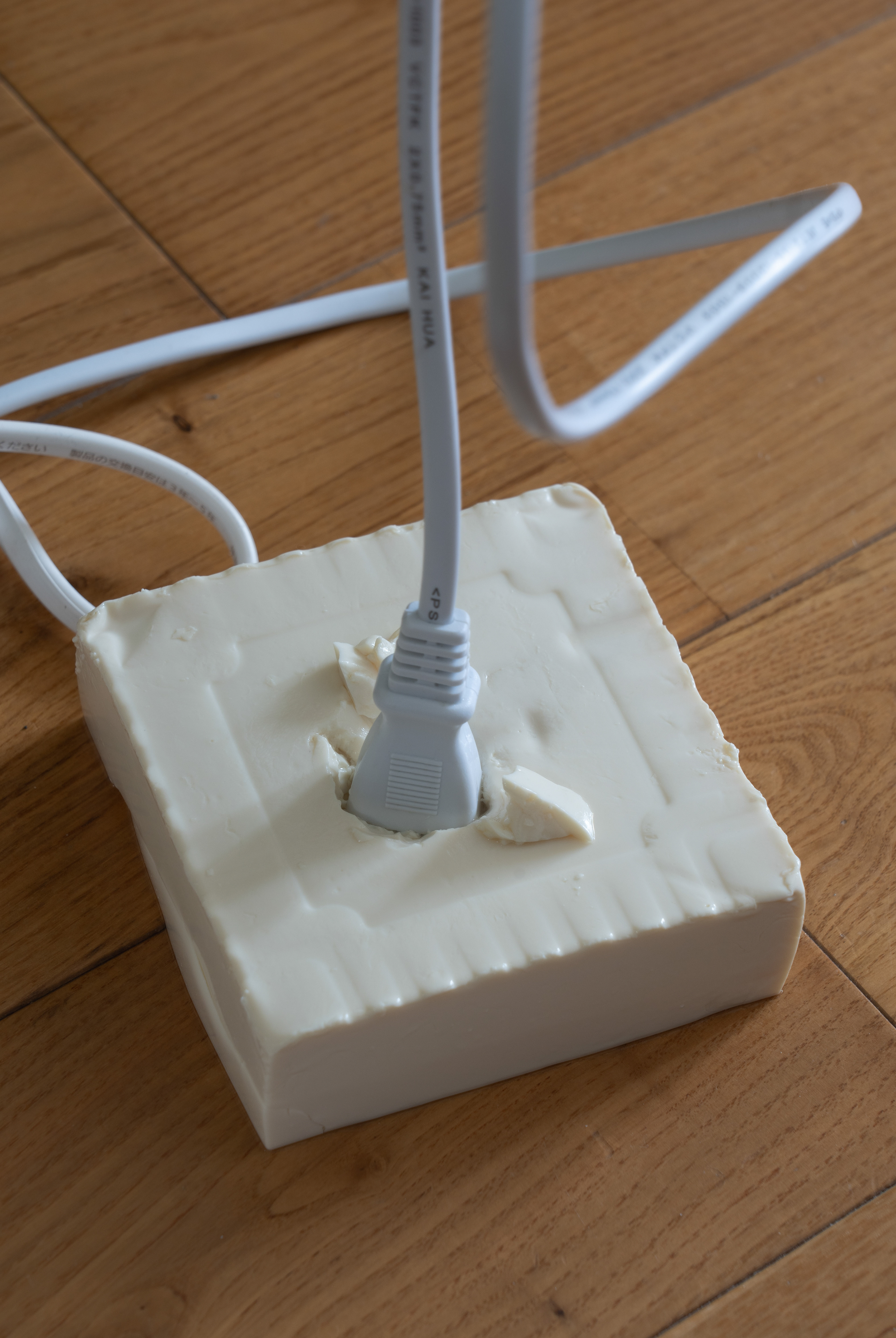[ongoing project]






ある風景を目にしたとき、それが無限の想像を掻き立てることがある。
この本では、私自身が風景をどのように見ているのか、そしてそこからどのような感覚や想像が生まれるのかを他者と共有しようとしている。
私が日常的に撮る風景には「違和感」という感覚が付きまとう。最初は、それを漠然とした感覚として捉えていた。
しかし、この違和感を掘り下げていくうちに、それが私自身の感受性から生まれる想像のきっかけであり、風景を捉える上での重要な出発点であることに気づいた。
この「違和感」という言葉について考えると、英語にはこれにぴったり当てはまる翻訳がない。それは、この言葉が人それぞれ異なる感覚を指し、幅広く抽象的であるからだろう。
たとえば私が「この風景には違和感がある」と言っても、それは他の人にとっては具体的にイメージしづらい抽象的な感覚に留まる可能性がある。
そこで私は、違和感を図形で記譜する手法を取り入れた。この記譜法は、私が風景を通じて感じた不安定さや湧き上がる疑問、そしてそこに潜む物語や背景を、具体的で視覚的な形に落とし込むための試みである。そして、それを写真と組み合わせることで、見る人に「違和感」という感覚を新しい形で伝えられるだけでなく、心の中に広がる風景(Mindscape)を地図のように記録していく行為でもある。
私が風景に抱く違和感の背景には、幼い頃からの「繊細さ」がある。
些細なことに気づきすぎたり、場の空気を読みすぎたり、人が気に留めないような状況を察して行動してしまう——そんな性質が、私の感覚を研ぎ澄ませているのだと思う。最近ではこうした特性が「Highly Sensitive Person(HSP)」と呼ばれ、世の中の4人に1人が持つと言われているほどで特段珍しい特性ではない。それだけに、この感覚を持つ人は意外と多く、自分の感じ方に共感する人も少なくないのではないかと思う。
大人になるにつれ、繊細さゆえの疲れを克服したり、避けたりする術を身につけてきた。
それは意識的に気にしないように努めたり、リラックスすることであったりするが、反射的に空想を働かせることで過剰な刺激を和らげる、という無意識の中で行なっている逃避(escape)があると感じた。
たとえば、日常の中でふと目に入る風景。道端の木が突然切られていたり、新しい物が置かれていたり——そんな小さな変化に気づき、背景を想像したりする。
そのまま受け止めると疲れてしまう情報に空想のフィルターをかけることで刺激を緩和しているのではないかと考えるようになった。空想することは私の心に余白をもたらす。
この記譜法は、私が風景から感じ取ったものを他者と共有するためのツールであり、同時に、この本を手に取った人自身が「自分にとっての違和感のある風景」を探す地図にもなり得るのではないか。
I often find myself looking at a scene and getting lost in my own imagination.
In this book, I attempt to share how I perceive such scenery and the emotions and thoughts they evoke in me.
The scenery I capture in my daily life often carry a certain “Iwakan” is a Japanese word describing a subtle sense of discomfort, unease, or feeling that something is out of place. At first, I saw this Iwakan as a vague, undefined impression.
However, as I delved deeper into it, I came to realize that this Iwakan is rooted in my sensitivity and serves as a spark for imagination—a vital starting point for understanding and interpreting the world around me.
When reflecting on the term “Iwakan,” I find there isn’t a perfect English translation for it. The concept is inherently broad and abstract, varying greatly depending on the individual. For example, when I say, “This scene gives me a sense of Iwakan,” it may not resonate concretely with others—it might remain an abstract idea, difficult to grasp.
This led me to develop a method of visually mapping Iwakan. Through this method, I attempt to transform the instability, the questions that arise, and the hidden stories or contexts I perceive in a scene into tangible, visual forms. By combining these visual “notations” with photographs, I hope not only to communicate Iwakan in a new way but also to chart the mental landscapes (Mindscapes) that unfold within me, like a map.
The Iwakan I feel in response to landscapes is closely tied to my sensitivity, something that has been with me since childhood. I have always been hyper-aware of small details, overly attuned to the atmosphere of a room, and quick to notice things that others might overlook. This heightened awareness has, over time, sharpened my perceptions. Today, these traits are often referred to as characteristics of a “Highly Sensitive Person (HSP),” a term that describes roughly one in four people. It’s not an uncommon trait, and I believe many others may share and relate to the way I experience the world.
As I’ve grown older, I’ve learned how to navigate the exhaustion that can come with such sensitivity.
Sometimes it’s about making a conscious effort to not overthink things or finding ways to relax. But at other times, I’ve noticed a more unconscious response—an instinctive use of imagination as a way to soften the overwhelming stimuli around me.
For instance, in everyday moments, I might notice a tree suddenly cut down or a new object placed on the side of the road. Such small changes catch my attention and spark imaginings about their backstory. Rather than absorbing these observations as they are—which might leave me mentally drained—I filter them through my imagination, which helps me manage the stimuli and, in turn, creates space within my mind.
This method of visual notation is a tool to share what I sense in these landscapes with others. At the same time, I hope it can serve as a map for readers to explore and discover the landscapes of Iwakan that resonate within their own lives.








